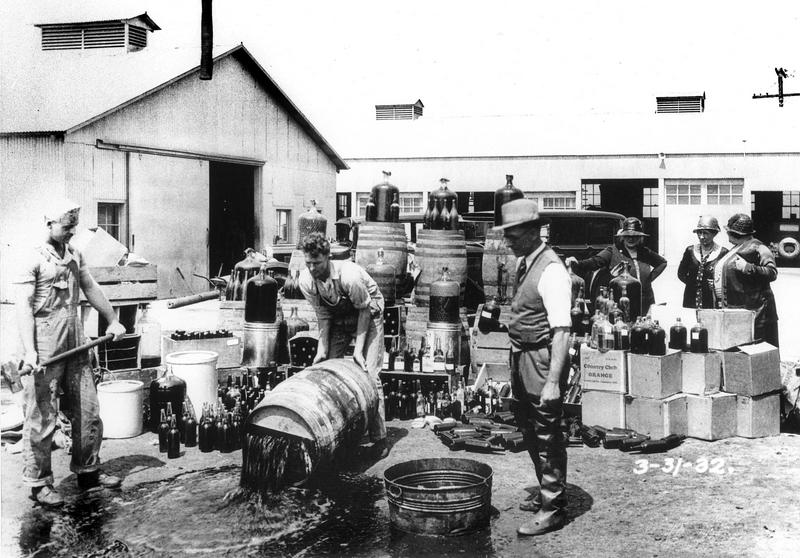How The U.S. Government Poisoned Hooch During Prohibition
By | November 25, 2019

Most of the time, conspiracy theories are simply fantastical hoaxes. However, every once in a while, one proves to be true. Believe it or not, the U.S. government poisoned thousands during the Prohibition era in its war against alcohol.

Prohibition was the culmination of a long fight by Temperance organizations against alcohol. In 1919 the 18th Amendment to the Constitution went into effect which banned the manufacture, sale, and transportation of intoxicating liquors. The subsequent Volstead Act which took effect in 1920 provided the means by which Prohibition was to be enforced.
But Prohibition was impossible to enforce. An illegal black market for alcohol including a proliferation of speakeasies sprung up before the ink on the amendment dried. Associated with this was a rise in gangs and organized crime that took control of the liquor market. Alcoholism counterintuitively actually increased during Prohibition.

The United States attempted various means to enforce Prohibition. Normally this was by bolstering law enforcement. There were also legal means. Alcohol was not simply used for drinking — there were plenty of industrial uses for the substance as well such as in paints and thinners. Therefore to encourage producers of industrial alcohol to not make a product that could be used for drinking purposes, offered tax breaks to “denature” it by adding noxious substances to the alcohol to make it undrinkable.

Bootleggers who stole or otherwise illegally obtained industrial alcohol found ways to circumvent denaturing by redistilling the alcohol — renaturing them in effect. In the mid-1920s, some 60 million gallons of industrial alcohol was stolen for illicit consumption. To address the problem, the U.S. Government decided to step up its game and make industrial alcohol even more undesirable to bootleggers by putting even mixing even worse ingredients into it. Of the many toxic chemicals, the worst was wood alcohol (methanol). The government claimed it was not trying to poison anybody, but wanted to make industrial alcohol unfit as a beverage. They believed that the risk of poisoning would be an effective deterrent to alcohol consumption. Advocates of the addition of poisons noted that it was clearly marked by a skull and crossbones.

This did not matter to many bootleggers who took the denatured alcohol and mixed it with regular liquors to stretch their supply. Yet the situation did not make national news until the days around Christmas in 1926 when 40 people died at New York’s Bellevue Hospital from drinking denatured alcohol. About a hundred people died that week. While some Prohibition supporters viewed the poisoning as degenerates getting what they deserve, many others were strongly critical of the government’s callousness. One outspoken opponent was Charles Norris, New York City’s Chief Medical Examiner who wrote, “Poison, poison everywhere, and increasing thousands are daily drinking it. Shall we simply shrug our shoulders and say ‘So much the worse for them’?” He called the poisonings a “serious indictment of Prohibition before the court of public opinion” even though he supported some denaturing of industrial alcohol in order to “prevent its being all drunk away and thereby denied to legitimate industry and business.” Still, he stated at a press conference, “The United States government must be charged with the moral responsibility for the deaths that poisoned liquor causes, although it cannot be held legally responsible.”

Some have estimated to up to 10,000 people were poisoned by Prohibition’s end in 1933. The truth is that the actual number of poisonings and related deaths will never be known. Death by alcohol-poisoning was seen as a social stigma for degenerates and private doctors would as Norris put it, “prefer to ascribe death to other ‘natural causes’ when they can, in the case of clients in good standing or society.”
The memory of the denaturing program faded although the denaturing process is still used today. The difference is that there is no point to drinking denatured alcohol since safe alcohol can be found legally and in quantity.

